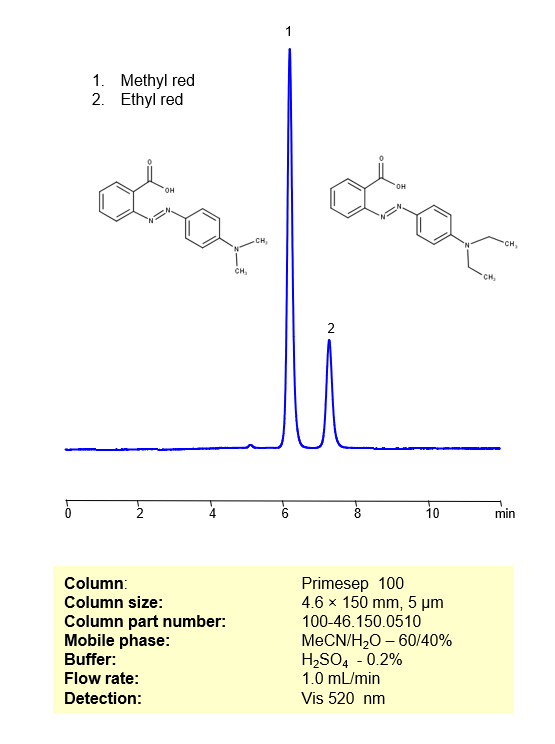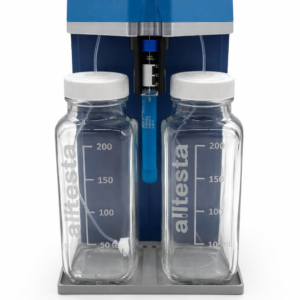High Performance Liquid Chromatography (HPLC) Method for Separation of Methyl Red, Ethyl red on Primesep 100 by SIELC Technologies.

Methyl Red, also known as C.I. Acid Red 2, is a dark-red, single-charged basic dye that turns a deep red in acidic (low pH) solutions and yellow at solution with pH above 6.2. It has the chemical formula C15H15N3O2. You can find detailed UV spectra of Methyl Red and information about its various lambda maxima by visiting the following link.
Ethyl red is a pH indicator with C17H19N3O2 as its molecular structure. When the pH transitions from acidic to neutral, Ethyl red turns from yellow to red, hence the name. Outside of experiments, it is occasionally used as a dye in textiles and foods. You can find detailed UV spectra of Ethyl Red and information about its various lambda maxima by visiting the following link.
Methyl Red, Ethyl red can be separated, retained, and analyzed on a Primesep 100 mixed-mode stationary phase column using an isocratic analytical method with a simple mobile phase of water, Acetonitrile (MeCN), and a sulfuric acid (H2SO4) buffer. This analysis method can be detected in the Visible spectrum at 520 nm.
Condition
| Column | Primesep 100, 4.6 x 150 mm, 5 µm, 100 A, dual ended |
| Mobile Phase | MeCN/H2O – 60/40% |
| Buffer | H3PO4 – 0.2% |
| Flow Rate | 1.0 ml/min |
| Detection | Vis, 520 nm |
| Peak Retention Time | 6.19, 7.28 min |
Description
| Class of Compounds | Dyes |
| Analyzing Compounds | Methyl Red, Ethyl red |
Application Column
Primesep 100
Column Diameter: 4.6 mm
Column Length: 150 mm
Particle Size: 5 µm
Pore Size: 100 A
Column options: dual ended
Methyl Red





